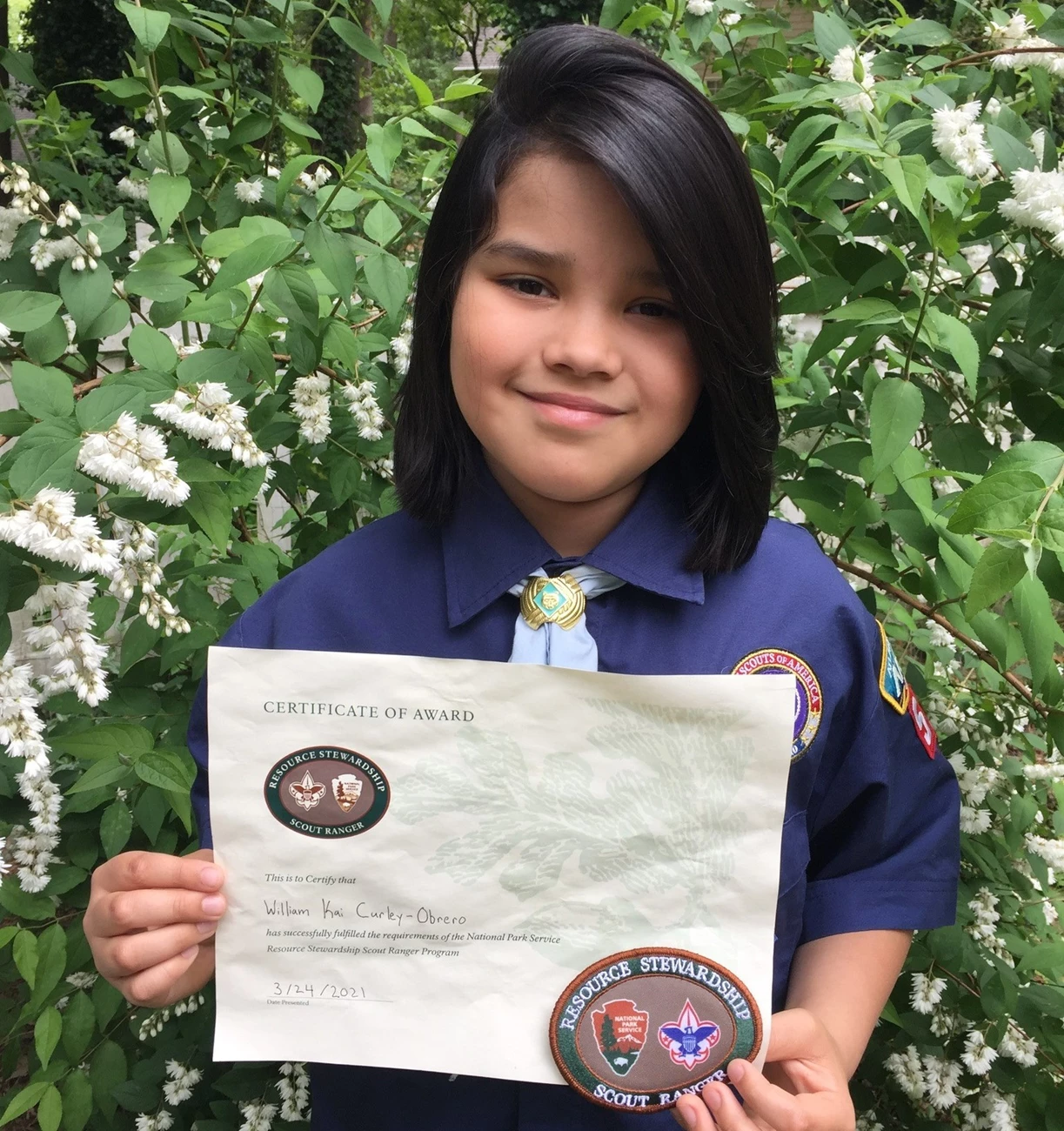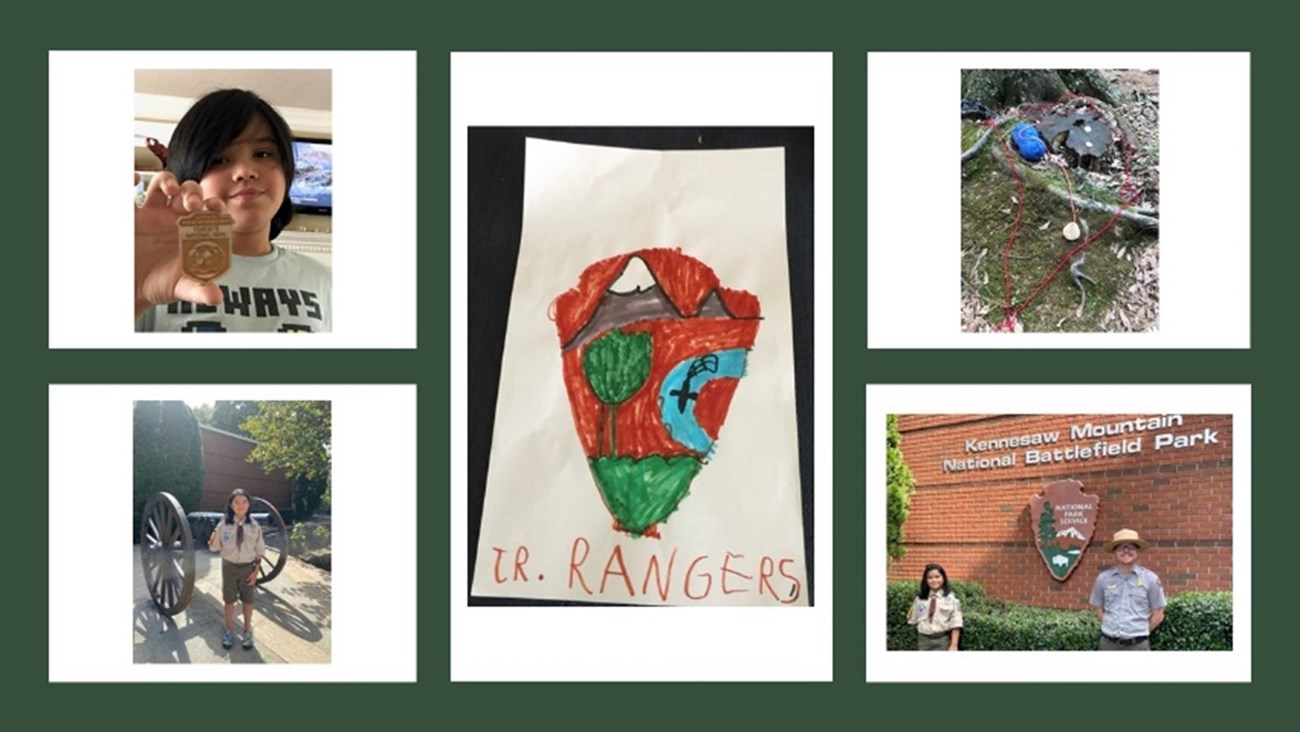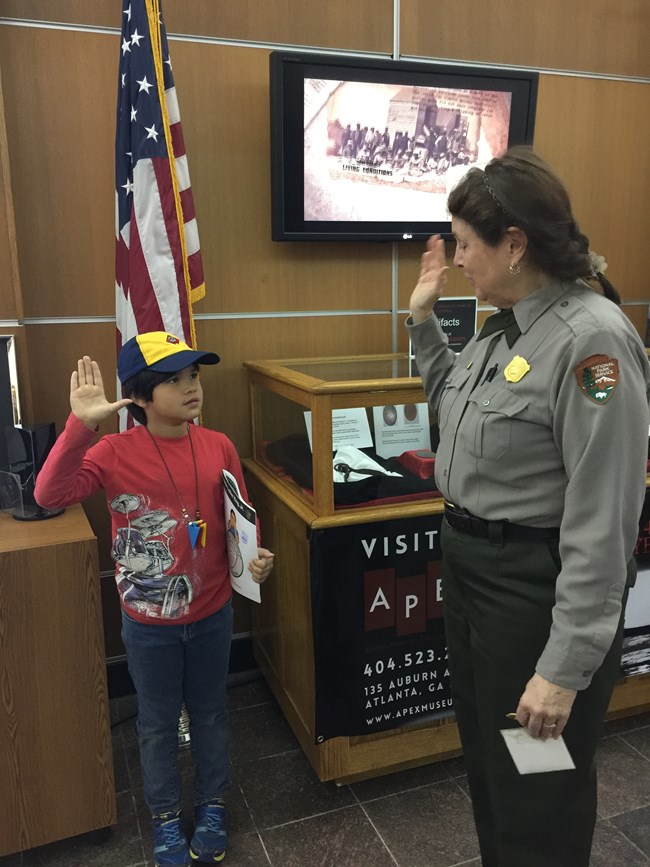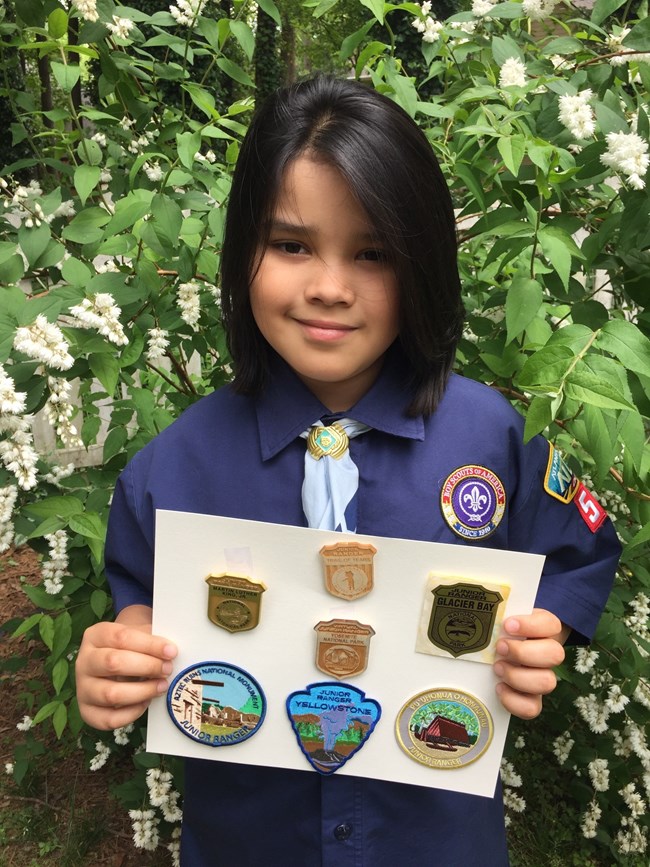Last updated: April 18, 2022
Article
The Resource Stewardship Scout Ranger Program Brings BSA Scouts and National Parks Together

Photo courtesy of Cynthia Curley-Obrero
Of all the wonderful ways that the National Park Service (NPS) can help us get to know our natural, cultural, and historical wonders, one important aspect is community building. To connect more youth to their local communities, NPS created the Resource Stewardship Scout Ranger Program in partnership with the Boy Scouts of America, which welcomes boys, girls, and young adults to participate. Through this program, BSA Scouts and Cub Scouts can earn award certificates and may also receive special patches for completing at least ten hours as a participant in the program. The program provides these participants the opportunity to explore and learn about their national parks through educational and volunteer service projects that protect our natural and cultural resources. The Scout Ranger Program extends the connection beyond traditional recreational activities, such as hiking, camping, and respect for nature by encouraging scouts to learn what makes a national park important, not only to the country, but to themselves, and to their communities.
Cynthia Curley-Obrero, the Webelos Den Leader for the Atlanta Area Council’s Pack 540, shared her thoughts on how increasing awareness of this program would foster a greater sense of community between Scouts, Cub Scouts, and their public lands. She noted that, “The National Park Service supports much of what Scouting encourages: respect and appreciation for our natural environment and the animals who live there; an understanding of our past; how we fit into the present; what we want in our future; and support for our communities, large and small. The Scout Ranger Program encourages each individual to take initiative to learn about their surroundings and then act upon what they have learned in a positive way. It’s a perfect complement to the Scouting experience.”
Cynthia Curley-Obrero, the Webelos Den Leader for the Atlanta Area Council’s Pack 540, shared her thoughts on how increasing awareness of this program would foster a greater sense of community between Scouts, Cub Scouts, and their public lands. She noted that, “The National Park Service supports much of what Scouting encourages: respect and appreciation for our natural environment and the animals who live there; an understanding of our past; how we fit into the present; what we want in our future; and support for our communities, large and small. The Scout Ranger Program encourages each individual to take initiative to learn about their surroundings and then act upon what they have learned in a positive way. It’s a perfect complement to the Scouting experience.”

Photo courtesy of Cynthia Curley-Obrero

at Martin Luther King Jr. National Historical Park
Photo courtesy of Cynthia Curley-Obrero

Photo courtesy of Cynthia Curley-Obrero
To learn how you can earn the Resource Stewardship Scout Ranger Award certificate and patch, visit https://www.nps.gov/subjects/youthprograms/scout-ranger.htm. Brainstorm some potential activities you can do in any of over 400 park sites, then contact a Park Ranger to develop a plan. Five hours must be completed to receive a certificate and ten hours for a certificate and patch. Most importantly, go out to the park and have a great time. Once you have completed your hours, please mail the signed activity tracking sheet to the park where you participated, or e-mail us with the document, and we will help you get your award certificate and patch (if applicable). If you have any questions about the general requirements to get your patch, please feel free to email us and look at our official Resource Stewardship Scout Ranger Program page. Please note this program is different from the Girl Scout Ranger Program, though you are welcome to participte in that program as well.
Get in touch! Please e-mail us and follow us on Facebook, Instagram, and Twitter @NPSYouth and use #NPSYouth to share your experience with us! Visit our page to find the many opportunities for youth and young adults to get involved with our parks.
Tags
- aztec ruins national monument
- biscayne national park
- glacier bay national park & preserve
- kennesaw mountain national battlefield park
- martin luther king, jr. national historical park
- puʻuhonua o hōnaunau national historical park
- trail of tears national historic trail
- yellowstone national park
- yosemite national park
- youth
- youth programs
- junior ranger
- scout ranger
- resource stewardship scout ranger program
- education
- national park week
- spark collaboration
